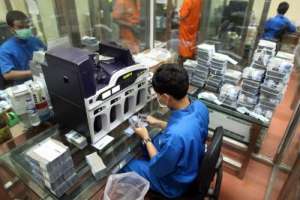
The ASEAN Economic Community, planned to come into effect in 2015, is expected to liberalize goods, capital and skilled labor flows in the ASEAN region. While there has been considerable progress in the area of trade integration, financial integration still lags behind. The ASEAN Banking Integration Framework, which aims to liberalize the banking market by 2020, could help pave the way for further integration and the entry of ASEAN banks into regional banking markets.
Allowing banks to operate across borders enables them to take advantage of economies of scale to increase efficiency and reduce costs. The entry of regional banks into domestic markets can increase competition, leading to lower prices and a greater variety of banking products and services. Heightened competition may also spur banks to expand into rural areas which are traditionally underserved by banks. Extending banking to the rural poor is an important means of promoting inclusive economic growth in ASEAN.
Currently, the level of integration in ASEAN’s banking sector is relatively limited. The share of ASEAN’s banking assets held by regional banks is generally smaller than global banks. Indonesia has the highest share of banking assets held by other ASEAN banks at almost 15%, followed by Malaysia at around 9%. Malaysian and Singaporean banks have been actively expanding their operations in recent years into other ASEAN markets. For example, CIMB Bank from Malaysia has large subsidiaries in Thailand and Indonesia, while United Overseas Bank of Singapore has a strong presence in Malaysia and Thailand. Greater intra-ASEAN trade and investment could also help encourage more banks to expand their operations regionally to better serve their clients.
While the share of ASEAN banks in the region’s banking market is still relatively small, it is not that different from that of European banks in the five largest European Union countries which benefit from operating in an integrated common market. This suggests that dropping regulatory barriers alone may not be sufficient to bring about close cross-border integration.
Entrenched incumbents in a saturated market may be hard to dislodge. Hence Singaporean banks which are dominant in their highly developed banking market will be hard to challenge. The three largest Singaporean banks control 80% of assets in the banking system in the country. However, banks in Indonesia and the Philippines which have large populations and relatively underdeveloped banking sectors are likely to come under greater competitive pressure from other regional banks. The banking systems in Indonesia and the Philippines are also more fragmented. The three largest banks in Indonesia and the Philippines only have 35% and 41% of total national banking assets, respectively.
As barriers to entry fall, the prospects of stronger competition from other ASEAN banks could push banks to merge as they look to strengthen their domestic position and better compete against regional rivals. Three Malaysian financial institutions, CIMB Bank, RHB Bank and Malaysian Building Society Berhad (MBSB) announced plans in July 2014 to merge. The merged entity is expected to overtake Maybank to become the largest Malaysian bank. The merger will help consolidate the banking market in Malaysia and create a regional banking power that can hold its own in its home market and have the resources to expand to other countries.
While recognizing there are potential gains, it is important to note that closer integration can give rise to new risks. As the region’s banking system becomes more tightly knit, there is potential for contagion and spillover effects. Hence, the authorities should work together to strengthen regulatory and supervisory cooperation frameworks to deal with potential spillovers.
As ASEAN is getting ready to reap the benefits from greater banking integration, it should also be ready to cope with the complex challenge of supervising banks whose operations span the region.
This article was first published by the ADB Development Blog.







Comments are closed.